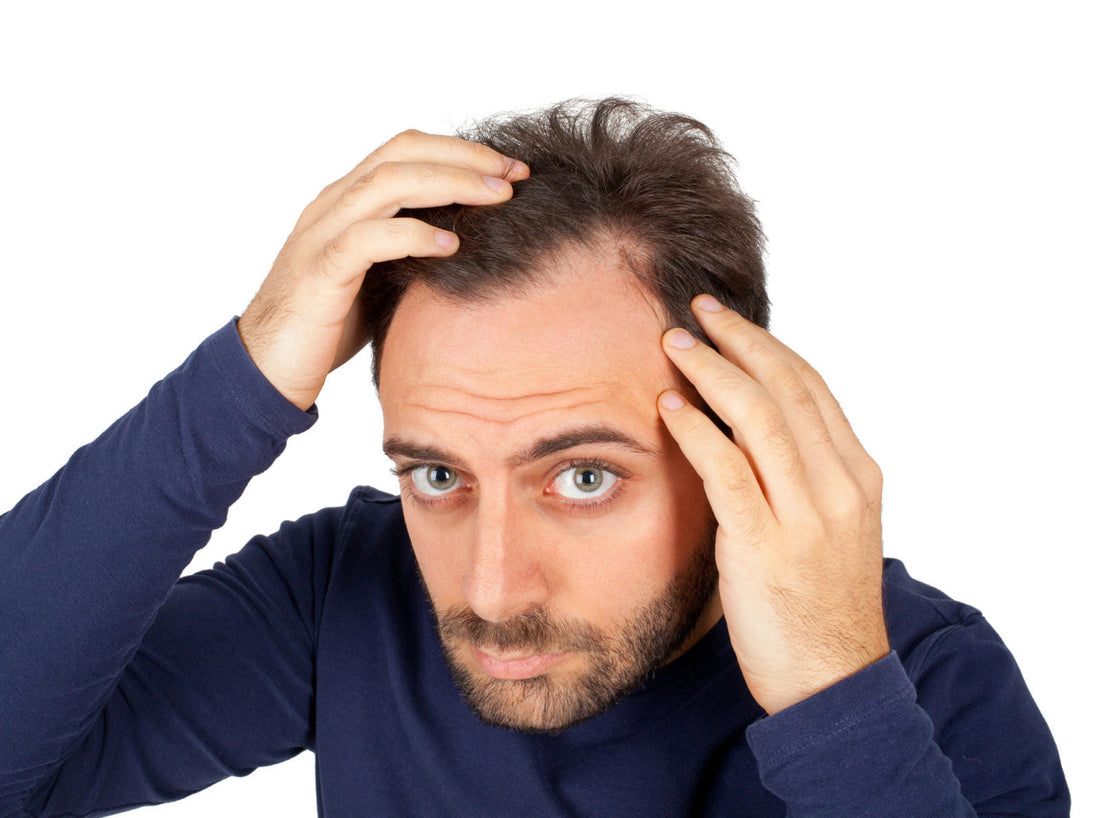5 Hair Loss Myths Uncovered: What You Should Stop Believing
Reviewed by Zang and Ridwan
Hair loss can be a challenging experience, and it's natural to wonder why it's happening to you./p>
The following myths about hair loss are just a few of the many misconceptions people may have. However, by understanding the true causes, you can make an informed decision on how to best address the situation moving forward.
Top 5 Hair Loss Myths
1. It’s a Result of Being Old
A common assumption is that hair loss is solely a result of aging, but this isn’t always the case.
Studies have revealed that the balding process is influenced by multiple factors, including genetics and hormones. Balding can actually begin as early as your 20s, and genetic predisposition from either parent can contribute. While it's often easy to point to dad, remember that your mother also carries genetic traits from her family, which could also play a role in the condition.
2. It Only Happens to Men
This myth is quite common and is largely shaped by the way women are portrayed in the media.
While bald, muscular men are often depicted in movies and TV shows, women are usually shown as bald only if they are ill or for comedic purposes. The truth is, women can experience hair loss just as men do, at any point in their lives. However, because of the social stigma surrounding it, many women opt to conceal their hair loss, making it difficult to see how many women are truly affected by it in everyday life.
Furthermore, women generally don't experience hair loss in the form of a receding hairline, as is more typical with men. Instead, female hair thinning usually starts at the crown or top of the scalp, which can be less noticeable.
The key point here is that hair loss is a natural process for both men and women. It’s entirely normal to seek solutions to address it if it helps you feel more confident.
3. Beware Tight Hats
It’s completely understandable to want to find an explanation for hair loss beyond just bad genetics, which is why the myth that wearing tight hats causes baldness has gained so much traction.
This myth likely stems from the fact that hats, like caps, often press on the front of the head, where male pattern baldness typically begins. In reality, while wearing tight hats may lead to discomfort or increased sweating, they do not directly cause hair loss.
However, it’s important to note that hairstyles which pull tightly on the roots, such as ponytails and buns, can actually contribute to hair loss.The constant tension on the hair follicles can lead to a condition called traction alopecia, which causes hair to thin or fall out. .
4. Stress Causes Hair Loss
This myth does have some basis in truth, but it is often misunderstood.
Everyday stress, like a tough week at work or a frustrating encounter with a stranger, won’t typically lead to hair loss. However, major life events, such as the loss of a loved one, can cause severe stress that disrupts the natural hair growth cycle, potentially causing hair to stop growing in patches.
This type of hair loss is different from the genetic balding process, so the good news is that it can often be reversed. As you heal and recover from the emotional stress, hair growth usually resumes, making this a temporary condition.
5. It Happens to Men With More Testosterone
The myth linking testosterone directly to hair loss originates from a misunderstood scientific study.
In the research, scientists discovered that higher levels of Dihydrotestosterone (DHT), a derivative of testosterone, were present in men experiencing hair loss. This led to the assumption that testosterone itself was the culprit.
However, further studies have shown that hair loss can occur in individuals with both high and low testosterone levels. The key takeaway from these studies is that genetics play the most significant role in determining who will experience hair loss, not testosterone levels alone.
There Is a Solution
The myths surrounding hair loss are commonly accepted, but despite numerous treatment options available, the results can often be both costly and underwhelming.
This is why I turn to the latest Scalp Micropigmentation technology. Rather than attempting to fight genetics, this approach effectively and safely conceals the balding areas using organic, plant-based pigments.
Reach out today to explore how this solution could work for you, and don't hesitate to ask any questions you might have.
